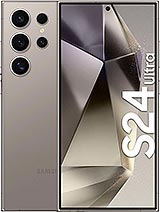Asus ROG Phone 8/8 Pro review

Competition
The ROG Phone is not a cheap device. Your local pricing and availability might differ, but some average pricing figures place the vanilla ROG Phone 8 in its 16GB/256GB variant at around $1099.99/€1099.99 with a pre-order special at $999.99. The ROG Phone 8 Pro with its 16GB/512GB configuration should start at around $1199.99/€1199.99. And the top-tier "Edition" package that comes with a 24GB/1TB Phone 8 Pro model and the AeroActive Cooler X is priced at $1499.99/€1499.99. The AeroActive Cooler X alone costs about $99.99. We won't pretend that these prices are affordable, but they are not far off from current flagship pricing either.
 Left: ROG Phone 8 Pro • Right: ROG Phone 7
Left: ROG Phone 8 Pro • Right: ROG Phone 7
That being said, the main competitor to the ROG Phone 8/8 Pro is probably the ZTE nubia Red Magic 9 Pro, which is already shipping and starts at a much more affordable $649/€649 for a 12GB/256GB variant and $799/€799 for the 16GB/512GB one. You get a lot of phone for that price, starting with the flagship Snapdragon 8 Gen 3 chipset, just like inside the ROG Phone 8 family. It is backed up by a larger 6,500 mAh battery in a similarly sized and slightly heavier body. Doubly impressive, given that the Red Magic 9 Pro has a built-in active cooling fan. You don't get the IP68 rating of the ROG Phone 8 or its telephoto camera or wireless charging.

Going for the nubia, you will have to compromise in the display department a bit as well. The size and resolution are comparable, and so is the color depth, but the nubia only does 120Hz refresh rate, lacks LTPO tech, and doesn't get nearly as bright. It also lacks any official HDR certification.



ZTE nubia Red Magic 9 Pro • Samsung Galaxy S24 Ultra • Apple iPhone 15 Pro Max
You don't really need a gaming phone to have an excellent mobile gaming experience, though and with a budget big enough to cover the ROG Phone 8, you can likely afford one of the other popular flagships out there.
It really does come down to personal choice, which one you pick. If we had to go with the popular vote, then Samsung would take the cake for better or worse. That being said, it would be kind of silly to recommend the Galaxy S23 Ultra now that the Galaxy S24 generation is practically here. So, consider the S24 Ultra instead. It offers what is arguably the pinnacle of smartphone displays right now, even better than the excellent panel inside the ROG Phone 8. The performance is also there thanks to the Snapdragon 8 Gen 3 chipset. You also get all of the other bells and whistles, like IP68 ingress protection and stereo speakers. Plus, a camera setup that is also superior to that on the ROG Phone 8.
If money is no object, why not consider the Apple iPhone 15 Pro Max? Things are really looking up for Apple mobile gaming. At least if having Resident Evil 4 and Assassin's Creed Mirage on iOS are anything to go by. And sure, the experience might not be perfect yet, but it is still impressive to see proper AAA PC games on a smartphone. Plus, you get all of the other bells and whistles Apple offers, like an excellent display and speakers, IP68 ingress protection and a very impressive and versatile camera setup. One of the industry's finest, in fact.
Our verdict
ROG Phone 8 generation and the ROG Phone 8 and 8 Pro are the phones with the most mainstream appeal to come out of the ROG family as of yet. This is the most compact and pocketable ROG Phone ever, now with proper IP68 ingress protection. Yet, that has not come at the expense of the excellent display, which still has a 6.78-indi diagonal, excellent upgraded 2,500 nits max brightness, HDR capabilities and 165Hz refresh rate, now with LTPO tech for adaptive refresh rate adjustment. The camera setup has been massively upgraded with gimbal OIS on the main cam and a dedicated telephoto shooter, both adding to the overall versatility and mainstream appeal of the ROG Phone 8 and 8 Pro.

The new, more compact design does come with a few sacrifices, though. The stereo speaker setup has been downgraded compared to previous generations. And the battery capacity, which has experienced a reduction from 6,000 mAh down to 5,500 mAh. However, in practice, neither is a major downgrade, and Asus has also done its best to mitigate other issues of the new design, like the punch-hole selfie camera interrupting the display experience and the absence of a notification LED.

Overall, we understand and support the changes Asus has introduced with the ROG Phone 8 family. In more ways than one, this move from purely gamer-focused device to one with a more general appeal has been an ongoing process for a good few ROG Phone generations. If this is what it takes for more people to notice the excellent ROG Phone family, then it is more than warranted. Plus, at its heart, the ROG Phone 8/8 Pro is still a gaming beast with excellent hardware and arguably industry-leading software to ensure the best possible gaming experience out there. It's just that it comes in a more mainstream package this time around.
Pros
- Most toned-down ROG design to date with mainstream appeal. Slimmed-down bezels and a much more compact body for the same display-diagonal.
- Proper IP68 ingress protection rating. A first on a gamer-specific phone. Gorilla Glass protection on both sides.
- There are no more POGO pins on the side port, which makes it simpler and more durable.
- Gorgeous 10-bit, HDR10+, AMOLED screen, 165Hz refresh rate and now with improved 2500 nits of peak brightness. Now with LTPO tech and adaptive refresh rate between 1Hz and 120Hz.
- Awesome battery life. Rich battery health prolonging options. Very fast charging (65W charger bundled) and now with 15W wireless Qi charging.
- Flagship Snapdragon 8 Gen 3 chipset with great options for performance tuning.
- Great Android implementation, control mapping and performance options. Now, with AI noise cancellation and semantic search features.
- Much improved camera versatility with a telephoto camera and gimbal stabilizer on the main cam. Solid daylight photos, as well as low-light images. Impressive selfie quality. Feature-rich camera app.
- Very good video quality, impressive EIS and new Super HyperSteady stabilization.
Cons
- The AirTrigger buttons are still present but have been downgraded a bit.
- The display is no longer uninterrupted and now has a punch-hole selfie.
- Slightly downgraded speaker setup compared to older ROG models.
- AeroActive Cooler X is required to make the most of the available hardware as the CPU is quick to throttle with it.
- The selfie and telephoto video capture capped at 1080p.
- AeroActive Cooler X is also a bit downgraded and only has two mappable buttons and no built-in subwoofer. It is smaller and more efficient at cooling, though.

